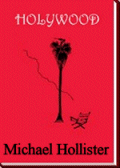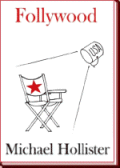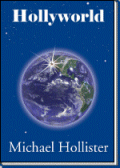Novelist & Critic
HOME PAGE
BIOGRAPHY
MODEL OF METAPHORS
DANEgerus
Patrick Garry, novelist
Apocalypse Now
The Best Years of Our Lives
The Big Chill
Billy Budd
The Bostonians
Casablanca
Citizen Kane
Close Encounters of the Third Kind
Coming Home
Daisy Miller
The Day of the Locust
Dr. Strangelove
Easy Rider
Fail-Safe
A Farewell to Arms
The Front
Gone with the Wind
Good Night, and Good Luck
The Graduate
The Grapes of Wrath
The Great Gatsby
Guilty by Suspicion
High Noon
Huckleberry Finn
Invasion of the Body Snatchers
Key Largo
The Majestic
Meet John Doe
Moby-Dick
The Old Man and the Sea
On the Waterfront
The Player
The Red Badge of Courage
Reds
The Scarlet Letter
The Shrike, based on Miss Lonelyhearts
2001: A Space Odyssey
The Sun Also Rises
Triumph of the Will
The Way We Were
Wise Blood
The Wizard of Oz
Woodstock
The World According to Garp
Peter Carafiol
Free Speech
Metaphor
archetype
Blacklist
Hollywood Novels
McCarthyism
Communist propaganda
The Majestic
The Majestic was written by Michael Sloane and directed by Frank Darabont. They were classmates at Hollywood High School back in the seventies. They included thirteen other classmates in their production and display the mentality of teenagers who were taught to believe in the Blacklist myth. It is mostly a standard love story that appears to affirm small town values, patriotism and devotion to American veterans who gave their lives in World War II. Gooey thick layers of conventional sentiment conceal the propaganda. American Communists were patriotic only about one war, because after that one, most of our other wars were fought against Communists.
Once again Hollywood leftists were trying to revive the Great Blowfish, now hissing its last breaths like a pink blimp deflated in the parking lot of the Beverly Hills Hotel, never majestic and by now full of big holes and shriveled up with a smell like a used condom. With spines all over it, the enormous prophylactic resembled a French tickler Stanley Kubrick might have worn on a tryst with Hanoi Jane.
After reading this, Kim looked askance at her brother.
"You said to write what I think," he shrugged.
In The Majestic, a Hollywood screenwriter is accused of being a Communist during the second round of hearings by the U.S. House Un-American Activities Committee in 1951, fifty years ago. The hero is played by an actor famous for his phony faces, grotesque exaggeration and elastic mouth. Call him Jim Scary. He claims to have no politics whatsoever. He simply attended one meeting of a Communist front organization back when he was in college, only in order to meet a girl. He is guilty only of being a horny young man. On this trivial basis, the FBI suspects him of being an important Communist spy. In real life, the Committee did not waste time on such irrelevant people and the accused could easily clear themselves by explaining their situations to the liberal labor leader Roy Brewer, who was given that authority by the Committee. Aside from that, any attorney could have cleared this character with a phonecall. By 1951, numerous friendly witnesses and the FBI, by infiltration, had identified all the noteworthy Communists in Hollywood many times over. Furthermore, when the FBI suspected that somebody was a spy, they tailed him, they did not blow an opportunity to uncover a network of spies by forcing the suspect in front of the world press. The House Committee famously exposed ten Communists to the press who were not spies, in order to alert the country to the extent of Soviet subversion in Hollywood.
Throughout this picture, the apparent good character of the writer and the patriotism of everyone are subverted by details that mean the opposite to leftist insiders. The hero becomes an amnesia victim, a joking reference to the Communists and liberals who claimed loss of memory when interviewed by the FBI. The movie tries to induce amnesia in the audience as well, by excluding relevant history. Red Writer claims not to know who he is, yet early in the picture, immediately after a mention of Reds, he says, "That's me." There is a reference to the famous Dreyfus case in France, which is intended to imply that the Committee is motivated only by ugly anti-Semitism. Another reference is made to the Director of the FBI wearing a dress. Jim Scary is Red Hollywood, smirky and coy and phony, a movie mocker full of contempt for an audience considered too dumb to get his subversive inside references and jokes.
The town that gives Red Writer refuge and turns him into a hero is named Lawson, after John Howard Lawson, one of the Hollywood Ten, the doctrinaire leader of the Communist Party in movietown in its heyday. The town newspaper is the Lawson Beacon. Red Writer's girlfriend wears red like the town band. Red is an insistent motif, including the tickets, carpets and seats of The Majestic Theater, a symbol of the movie industry. Red Writer becomes the theater manager and opens with a movie--set in France--starring Gene Kelly, an active supporter of the Ten and the Communist agenda in Hollywood unions. A poster and a veteran with a hook for a hand link his story to The Best Years of Our Lives, celebrating the subversive tradition in Hollywood. The last movie advertised on his marquee, Invasion of the Body Snatchers, indicates that his own story is a rebuttal. When he runs The Day the Earth Stood Still, he shows a clip from it that depicts the U.S. Army firing on an alien from outer space, suggesting that Communists are aliens, yes, but they come in peace. In real life at this time, Red revolutions supported by the Soviets were erupting all around the world. Red Writer implies that like the aliens shown in the clip, Communists should be obeyed because they are so much superior to ordinary Americans, who are very stupid to resist. While pretending to honor them, the movie defames war heroes who died fighting fascism. They are called "sons of Lawson," as if, had they made it home, they all would have betrayed their country and become Communists.
At the climax, Red Writer is confronted by a force of police officers large enough to fight a gun battle with the gang of Al Capone, but they merely deliver a subpoena. When he arrives to testify, the hundreds of photographers from all media appear to be covering an event of global importance. The hearings room is as crowded as the one for the Hollywood Ten, evoking the most important event in the history of the Committee. But the movie gives no inkling of what caused the Blacklist. Communism is completely off screen. In real life 1951, we were at war against Communists in Korea, with a Democrat in the White House. During that year the Rosenbergs were convicted of stealing our atomic secrets for Stalin, subjecting Americans to the terror of nuclear attack. Yet the only issue in this movie is free speech, as if Communists believed in it. Though as a screenwriter he has privileged speech, Red Writer acts as if his only venue for free speech is a hearings room of the U.S. House and his only opportunity is under a subpoena when asked a question by a congressman. He is so dishonest he lies to himself.
The movie attributes all evil to institutions and agencies of the U.S. government. The Bad Guys are the FBI and the elected representatives of the American people, all of whom are depicted throughout the picture as sinister thugs. The script falsely claims that the House Committee had no legal authority to hold hearings nor to investigate Communism, that it was the Committee rather than the studios that blacklisted people and that many innocent people were blacklisted. With a cynical irony that must have given Red insiders a lot of laughs, the movie falsely claims that witnesses before the Committee were forced to sign false statements. That was the method of their side, most notably of Stalin in his infamous Moscow Trials.
The most obscene moment in the picture, comparable to Hanoi Jane loving up a Vietnam vet, is when Red Writer concludes his testimony by holding up a Congressional Medal of Honor earned by someone else and equates his defiance of the Committee with the courage of a dead war hero. A lying traitor poses as a model of patriotic valor. For this outrage, he becomes a national hero and is given unanimous ovations everywhere he goes, contrary to real life, in which four out of five Americans supported the Committee. Stealing honor from dead heroes makes Red Writer feel majestic. Hollywood Reds can feel majestic with him when he says at the end, like Paul Jarrico at Hollywood Remembers the Blacklist, "The Good Guy wins!"
The movie concludes with a fantasy of Red victory in America that recalls the vision in Body Snatchers. Communism prevails in Lawson and everywhere and nothing seems to change, except that everybody seems more happy. Totalitarianism seems no different from Democracy. Of course, there are no churches in Lawson. And people are regimented. The whole town follows the lovers on a stroll down main street, notably composed of old familiar leftist actors who look grateful to be employed. The mentality of a movie set prevails, where actors and crews are governed as a rule by a producer more or less like Stalin, and his various directors. Everybody has an assigned job, takes orders and follows a script written by a committee, or production team, like the Soviet Politburo. Everybody conforms in order to stay employed and not be exiled to the Siberia of suspected Republicans. Stars are privileged members of the ruling class who can have fun pretending all the time and do not need to think or vote, with all their needs met by assistants and the makeup department. As a member of the Politburo, faithful to the Party line, when he tells off a committee of infidels, Red Writer imagines himself a hero deserving the highest honor his nation can bestow.
The Majestic is accurate in one respect. Blacklisting turns the Red screenwriter into a hero and boosts his career in Hollywood, where America now is the enemy. At a time when terrorists were mounting a war against us and cooperation with our government was vital to the national defense, the release of this movie could not have been more subversively timed had it been coordinated with al-Qaeda and its attacks on 9/11.
Hollyworld, pages 374-78.
The
HOLLYWOOD
Trilogy
Three historical novels dramatize Hollywood's global influence from the 1930s to the present age of terrorism, through the life stories of Sarah McCloud, a farm girl from Oregon, and Ryan Eisley, the son of a beer distributor from Ohio.



Click Book to Order